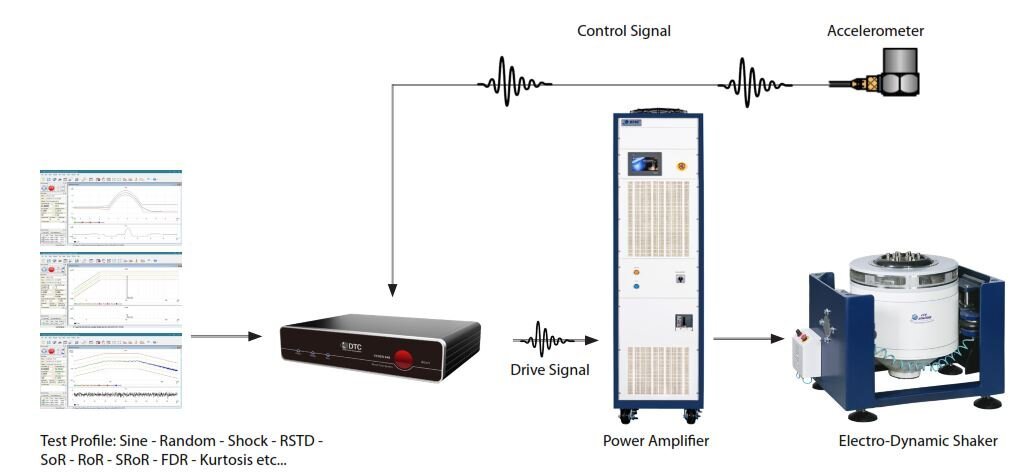VIBRATION TESTING TECHNOLOGY
Basic units used for vibration test
There are four important units for a vibration test:
Force [N]
Acceleration [m/s2]
Velocity [m/s] and
Displacement [mm peak-to-peak (p-p)]
Calculating Required Force requires application of Newton’s Second Law of Motion:
F (Force) = M (Mass) x A (Acceleration)
That is to say, when a mass of 1 kg is accelerated to an acceleration of 1 m/s2 the required force is 1N.
The mass value (M) must include all moving masses attached to the shaker armature surface including the armature mass itself:
shaker armature + head expander or slip plate with its driver bar + test specimen + specimen interface fixture, including bolts and bearing friction if the system is driving horizontal plate using hydrostatic bearings.
The maximum acceleration (A) is derived from the customer test specification:
for Sine Vibration (G-peak)
for Random Vibration (G-rms)
for Classical Shock Pulse (G-peak)
The user must know the maximum displacement and velocity of any given test parameters to ensure they choose the right system and they don’t exceed the system capabilities.
The suitability of a specific test system can be evaluated in terms of the following:
Force requirement (lbf or kgf )
Unit Under Test (UUT) + Fixture Weight + Armature Weight x G = F x 1.30 (30% safety margin)
The result will give you the required Force for shaker system selection
Maximum Displacement (determined by test environment)
Maximum Velocity (determined by test environment)

